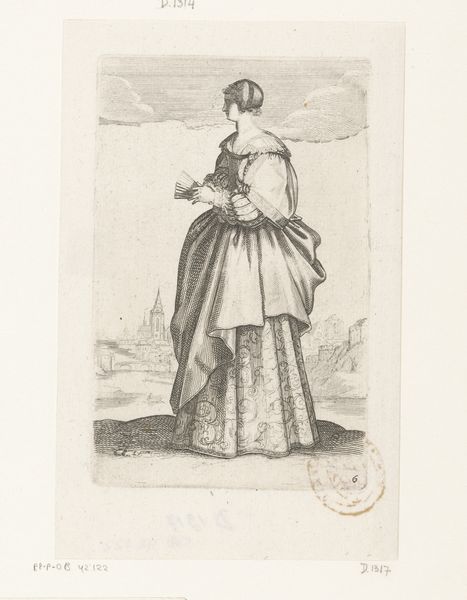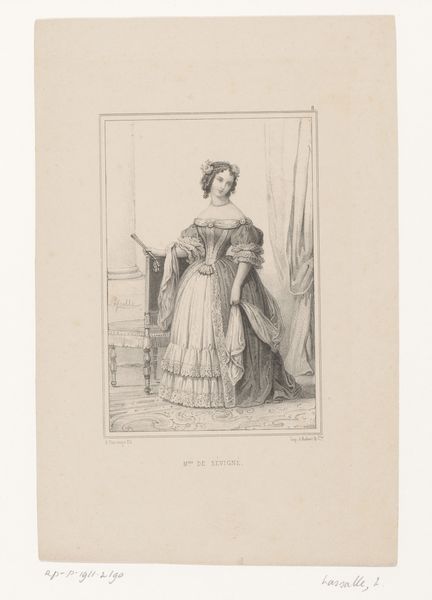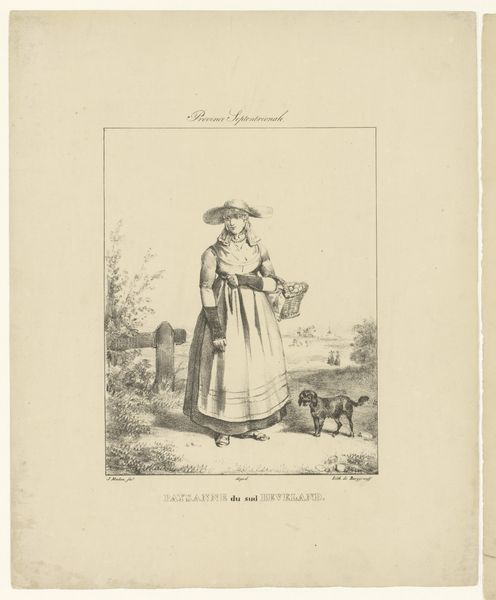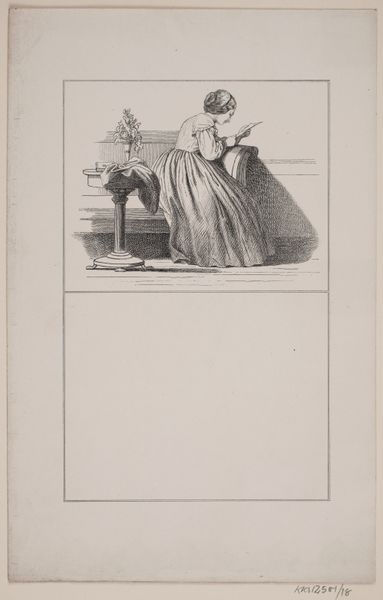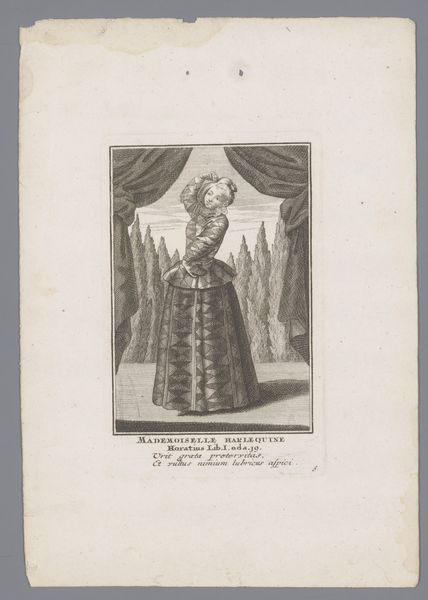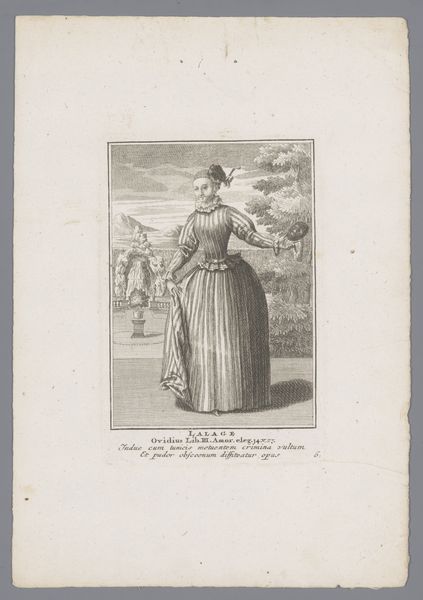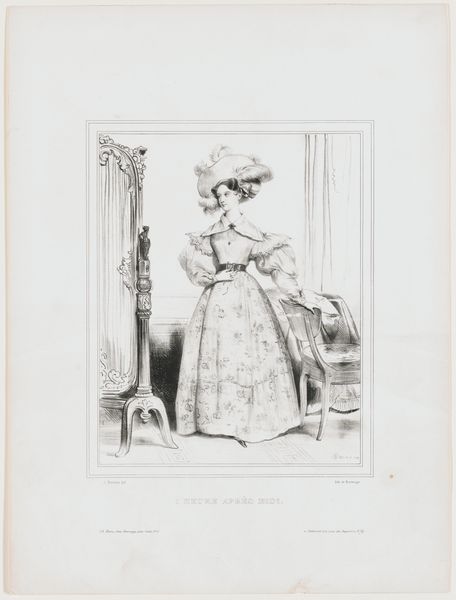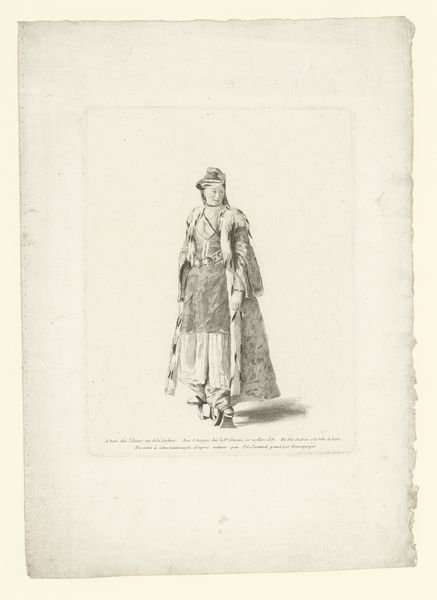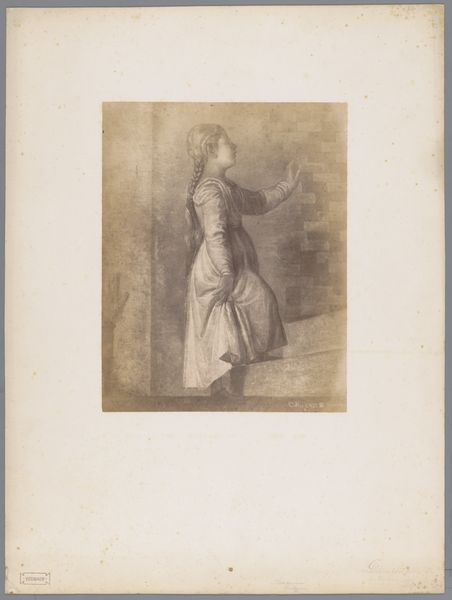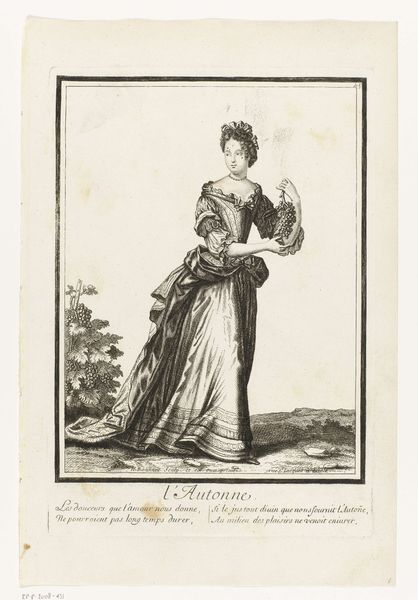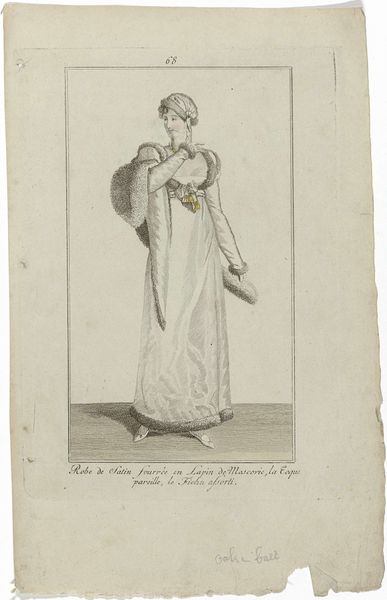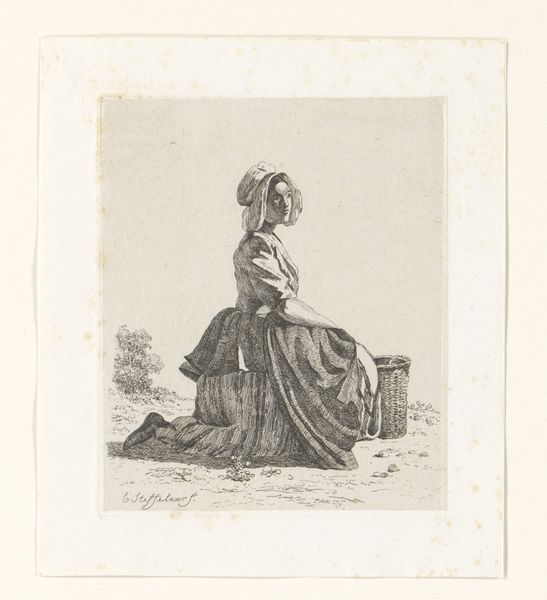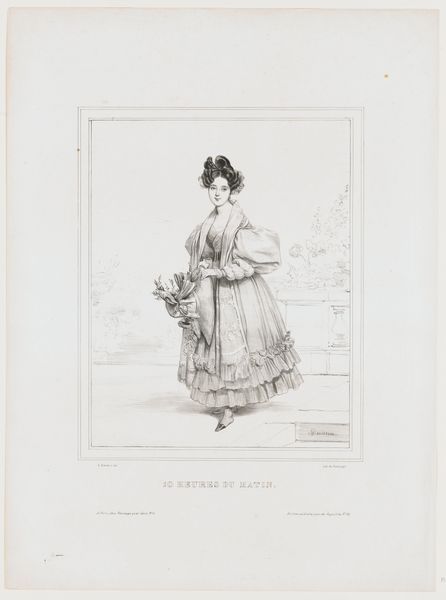
print, engraving
#
portrait
#
baroque
#
ink paper printed
# print
#
figuration
#
engraving
Dimensions: height 172 mm, width 112 mm
Copyright: Rijks Museum: Open Domain
Curator: So, here we have an engraving, simply titled "Corinna," which the Rijksmuseum dates from around 1694 to 1725. Editor: It has a lovely, almost silvery sheen for a black-and-white print. Like light caught in a spiderweb. The way the fabric folds suggest wealth, maybe status... or perhaps that’s intentional deception. Curator: The woman depicted is believed to represent a courtesan. The Latin text below, a quote from Ovid’s Amores, essentially says she seeks wealth through her body, adding another layer to the image. Editor: That period was just rife with these sorts of power imbalances! It speaks volumes about the commodification of women—even suggests the seeds of resistance against it. Is she complicit, or is she surviving in a rigged system? Is she using it back? The positioning is both assertive and hesitant. Curator: You see that complexity mirrored in her attire. While undoubtedly opulent, it almost looks like a costume. See how her hands hold the fabric out, presenting herself, yet slightly obscuring her form at the same time. Editor: Right! It highlights the tightrope she must be walking. Existing between display and defense. And I’m always drawn to how women were depicted as reflections, sometimes distorting mirrors, of society's values, often unfairly judged for simply navigating them. What freedoms did Corinna truly have? Curator: The artwork encapsulates that moment of intersection, a perfect snapshot of Baroque anxieties meeting emergent possibilities within societal constraint. There’s an intriguing melancholy at its core. Editor: Yes, definitely, and perhaps even a spark of agency hidden in those shimmering folds. It stays with you long after you walk away.
Comments
No comments
Be the first to comment and join the conversation on the ultimate creative platform.
